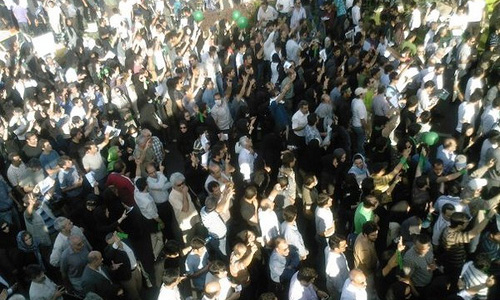
Egypt and Iran have historically been two of the Middle East’s major powers. As centers of economic, scientific and religious power they have played dominant roles in the region for centuries. In recent times they have both been subject to domination by British interests, Iran for its oil, Egypt for its natural resources and strategic position in North Africa and the Mediterranean.
Egypt was declared an Arab Republic in 1953, with British forces eventually being expelled from the country by 1956, followed by the nationalization of the Suez Canal by President Nasser. Iran, although not directly occupied by the British, did attempt to assert itself in 1953 when the government of Mohammed Mossadegh nationalized the oil industry. The outcry from the West led to a U.S./UK-inspired coup to overthrow the democratically elected government and support the Shah.
While Egypt developed a more independent path under Nasser, Iran under the Shah was a reliable Western ally. Following Nasser’s death Egypt shifted to a more pro-Western position under Anwar Sadat, from 1970 onwards, culminating in the peace treaty with Israel in 1979 for which Egypt found itself expelled from the Arab League. With the assumption of power by Hosni Mubarak in 1981 the position of Egypt as a key Western ally in the Arab world was consolidated.
Iran by this time had travelled in the opposite direction. The popular revolution which overthrew the Shah in 1979, and promised so much, had been usurped by Islamic fundamentalists. The United States was the Great Satan and Iran was fighting a debilitating Western-prompted war against its neighbor Iraq.
For 30 years both countries have been dominated by anti-popular, autocratic regimes – in the case of Egypt, as a bulwark against Palestinian independence, in that of Iran as the bete noire of successive U.S. presidents and the inspiration for Islamic fundamentalism across the region. Both countries now see the possibility of decisive change.
Popular opposition in Iran to the “re-election” of Mahmoud Ahmadinejad in June 2009 was as widespread as it was unexpected in a country which did not tolerate mass popular demonstrations. The birth of the Green Movement, with “defeated” presidential candidates Mehdi Karoubi and Mir Hossein Mousavi, along with his wife, Zahra Rahnavard in the forefront, has provided a rallying point for decades of pent up frustration amongst the Iranian people.
On February 14 this year, the Iranian government suffered a major psychological blow following the resurgence of street demonstrations. Since the presidential election of June 2009, in spite of massive waves of arrests and executions, the popular movement has continued to oppose the regime. The regime’s internal and international propaganda has attempted to portray the Green Movement as a foreign orchestrated “grand sedition,” but to no effect.
Since February 14 there have been widespread arrests. Detainees have been transferred to the notorious Kahrizak prison for torture. The regime is now targeting the leaders of the so-called “grand sedition” and calling for their execution. Mehdi Karoubi and Mir Hossein Mousavi have been accused by Ayotollah Khameini’s senior advisers of having direct contact with foreign organizations. During the last two weeks they have been completely isolated with their houses surrounded by plainclothes security agents, posing as “defenders of Islam and the revolution,” imposing a news blackout.
Reports from inside Iran suggest that the lives of Mousavi and Karoubi are in serious danger because of their courage in supporting the demonstrators and not submitting to the will of the “spiritual leader.” Iran’s theocratic dictatorship is now aiming to decapitate the popular movement in an attempt to eliminate any possibility of leadership and organization. Human rights activists across the world should be ready to respond to any news of further actions against these leaders of the Green Movement.
Events in Egypt and elsewhere in the Arab world have undoubtedly inspired the Iranian protesters to take to the streets once again. If the mass protests of the people of Egypt could remove Mubarak after 30 years, the same could be true of the Ahmadinejad regime and the conservative clergy backing it. Iran’s ruling elite are keenly aware of the indirect threat posed by the popular uprisings across the region.
There are other parallels between the two countries. As well as the ongoing sense of injustice about the lack of democracy there are day-to-day economic issues which have contributed to the instability of the regimes. Ahmadinejad’s recent neoliberal economic “shock therapy”, which removed and restructured subsidies, is causing widespread price increases resulting in growing hardship and discontent. Mass unemployment and economic hardship were also key factors in motivating the people of Egypt.
Both countries, having significant levels of industrialization, have a working class base capable of wielding major industrial power and advancing demands for greater economic justice through their trade union structures. While much of this organization is clandestine, due to the nature of the respective regimes, it is nevertheless disciplined and has the potential to play a decisive role in the outcome of current developments.
Faced with a mounting internal threat the Iranian regime is resorting to blaming outside forces for the internal crisis. It is unfortunate that recent comments by U.S. Secretary of State Hillary Clinton in support of Iran’s demonstrators play directly into the hands of the regime. Past evidence suggests that these comments will be recalled in the regime’s interrogation and torture chambers. They will be repeated in televised forced confessions and in the show trials of political activists.
In spite of this, the extent of external interference will be a key factor in determining how far-reaching changes in either Egypt or Iran can be. U.S. policy in the Middle East is being forced to shift away from direct support of lifelong dictators. The U.S. is also reshaping itself to influence the leaderships and the organizations behind the growing mass protests. The policymakers are well aware of the grassroots nature of these protests and their direct connection with mass economic deprivation.
The West’s key policy objective is to limit the desire of the masses to force fundamental socio-economic changes that would threaten the West’s “vital interests.” In Egypt the widening protests, developing into labor strikes, will be considered as a threat to Western interests. Similarly in Iran the growing awareness and organization among its labor movement is rarely discussed by mainstream politicians and the Western media.
The people of the Middle East are striving for a national united front against the ruling dictatorships and for a transition to real democracy for social justice. The crucial developments in Iran and the wider region can and should have progressive global effects. The people of the region need the sustained, consistent, genuine support of progressives in the West as they seek to carve out a path to democracy and self-determination.
A decisive shift towards real democracy, driven by the people, in Egypt and Iran would change the map of the Middle East dramatically. Not only would the basis for Islamic fundamentalism be weakened, the case for Palestinian autonomy would be greatly enhanced and the voices of Zionist fundamentalism in Israel reined in. These are outcomes which would not only benefit the people of the region but the people of the world. They are outcomes not only to be desired but to be worked towards.
Photo: June 17, 2009, protests at Karim Khan Street, Tehran, Iran. Via Twitter.


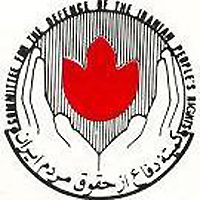
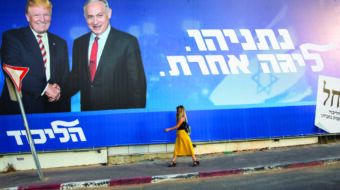
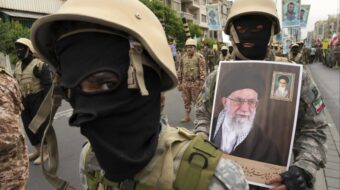
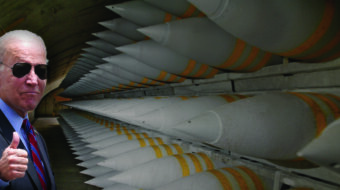






Comments